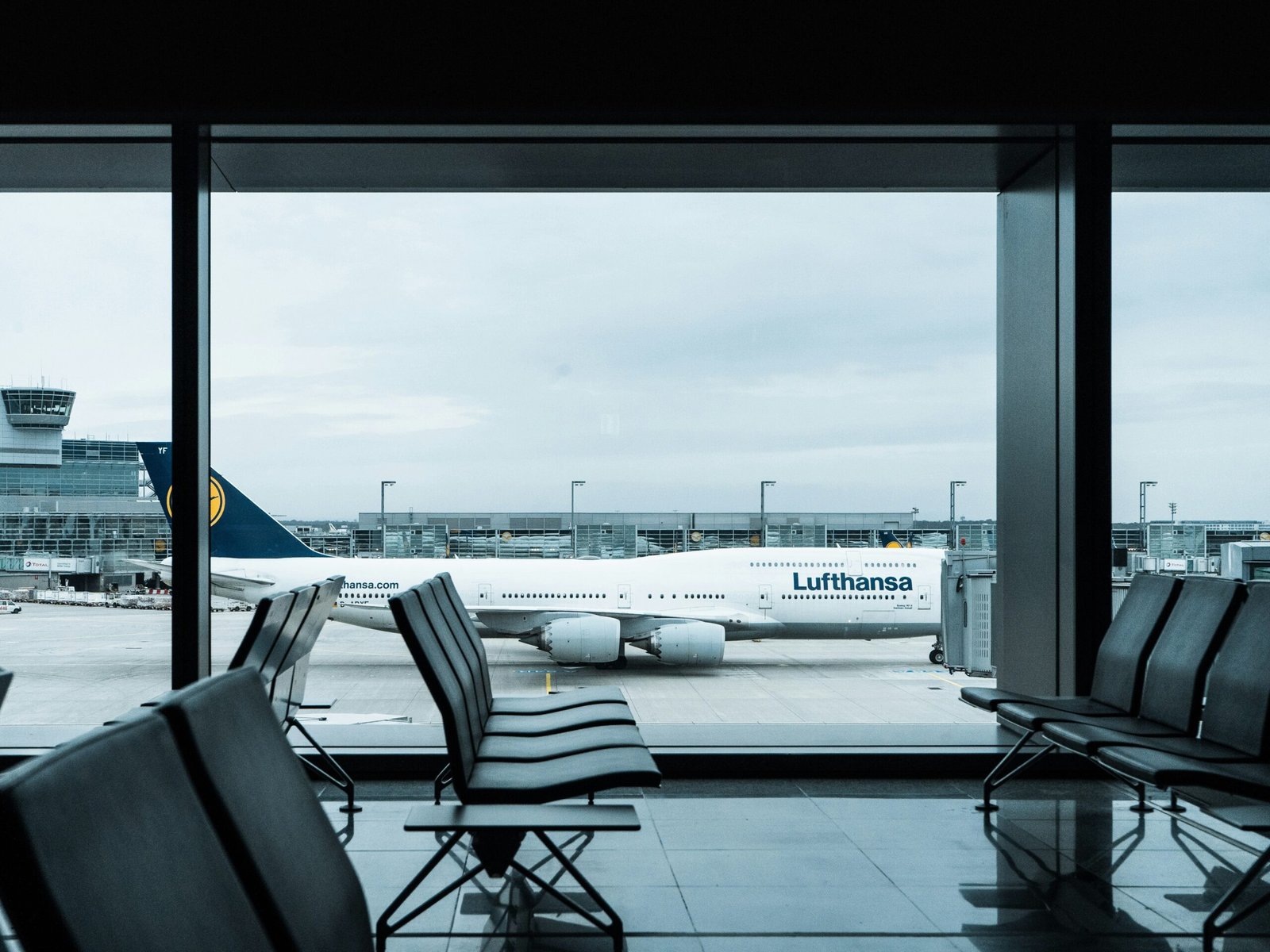Travel Trends
The US to Pilot Massive Visa Bonds for High Overstay Countries Like Myanmar, Bhutan, Turkmenistan, Djibouti And More: How Will This Impact Tourism and Global Travel Trends?

Tuesday, August 5, 2025
The United States is taking a significant step to combat visa overstays by launching a pilot program starting in August 2025. Under this initiative, travelers from countries with high visa overstay rates will be required to post huge visa bonds. While this move aims to strengthen immigration controls and ensure compliance, it could have profound implications for global tourism, particularly for visitors from regions with high visa overstays and limited financial resources.
High Visa Overstay Countries: Who Will Be Affected?
The new program targets countries with high B-1/B-2 visa overstay rates, as identified by the US Department of Homeland Security’s Entry/Exit Overstay Report. Countries like Myanmar (62.59%), Bhutan (58.41%), Turkmenistan (55.07%), and Djibouti (53.44%) have been reported as having the highest rates of overstays among visa holders.
According to the Henley Passport Index, which ranks the world’s passports based on the number of destinations their holders can access without a prior visa, many of the countries affected by this new policy have weaker passports that limit their travel freedom. For example, countries like Myanmar, Venezuela, and Liberia rank poorly on the Henley Passport Index, with their citizens requiring visas for most international travel, including to the US. These restrictions, combined with the new bond requirement, could further complicate travel for their citizens, potentially discouraging tourism to the US.
Travel Freedom
Countries that rank lower on the index, such as Myanmar and Eritrea, already face significant challenges when it comes to global mobility. These restrictions are exacerbated by the new US visa bond policy, which may discourage potential travelers from applying for US visas in the first place. This creates an additional obstacle for citizens from countries with lower-ranking passports, as the visa bond requirement could be financially unfeasible for many.
According to the latest Henley Passport Index, countries with weaker passports tend to be from regions such as Africa, Asia, and parts of Latin America. These regions already experience barriers to international travel due to visa requirements, and the introduction of visa bonds could be a further deterrent to US tourism, particularly for low-income travelers from these areas.
Financial Barriers to US Tourism
The bond requirement, ranging from $5,000 to $15,000, could place a significant financial burden on travelers, particularly from countries with already limited financial resources. Alongside the $250 visa integrity fee set to take effect on October 1, 2025, the total costs involved in applying for a US visa could become prohibitive for many would-be visitors. The US Travel Association has expressed concern that this combination of fees could lead to fewer tourists from regions like Africa, Asia, and Latin America—regions where passport strength is often weaker and economic challenges are prevalent.
The US Tourism Industry’s Concerns
The US tourism industry is already recovering from the impacts of the COVID-19 pandemic, and the timing of this new program is concerning for many stakeholders. The US Travel Association has warned that the visa bond requirement, combined with the visa integrity fee, could discourage legitimate travelers, particularly those from economically disadvantaged countries. The result could be a significant decline in international tourism, especially from regions with weak passports and high visa overstay rates.
For example, travelers from countries such as Venezuela and Angola—where visa overstays are relatively high—may be deterred by the additional cost of the bond, which could make the US a less attractive destination compared to other countries with less stringent visa requirements.
Economic Impact on US Tourism
The economic impact of these visa bond requirements could be far-reaching. If fewer international travelers choose the US as a destination due to the added financial barriers, it could lead to a reduction in tourism-related revenue. Countries with stronger passports, such as those in the European Union and Japan, may not be as heavily affected. However, for countries with weak passports, the bond could become a significant deterrent to visiting the US, potentially driving tourism dollars to other global destinations with more accessible visa policies.
Conclusion: Finding a Balance Between Immigration and Tourism
For the US tourism industry, the challenge will be finding a balance between enforcing immigration policies and maintaining its status as a global tourism leader. As the pilot program rolls out in August 2025, the world will be watching closely to see how these new requirements affect travel to the US, particularly from regions with high visa overstay rates and weaker passports.
Travel Trends
Travel News on August 6: Canada, United States, Tunisia, New Zealand, France Drive 2025 Global Tourism Trends Amid Strikes, Floods, and Eco-Tax Shifts

Wednesday, August 6, 2025
Author: Tuhin Sarkar
Travel news on August 6 brings a wave of fresh updates as Canada, the United States, Tunisia, New Zealand, and France drive 2025 global tourism trends. From coastlines to capital cities, each of these nations is shaping how the world travels—despite facing challenges like strikes, floods, and eco-tax shifts. These countries are not just reacting to change—they are leading it.
Canada has united six provinces to create a powerful tourism push. With breathtaking mountains, historic towns, and luxury lodges, Canada is determined to boost its global presence in travel. Yet, an Air Canada strike threat on August 16 could stall momentum. Meanwhile, the United States is juggling airline performance shake-ups and severe floods across its southeast coast, impacting both travel and tourism.
Tunisia, however, is soaring. With over 5 million visitors already this year, Tunisia is now a global tourism leader. It joins countries like France, which continues to attract millions to its vineyards and cultural landmarks. New Zealand is preparing for the future with an eco-tourism tax in 2027, showing a shift towards greener, more sustainable travel.
France, New Zealand, and the United States are also adopting eco-tax policies to protect their natural landscapes. These moves reflect growing awareness around sustainability in tourism.
As strikes, floods, and environmental pressures mount, the August 6 travel news makes one thing clear: global tourism is evolving. Canada, the United States, Tunisia, New Zealand, and France are all central to this change—and the industry is watching closely.
Canada Unites Provinces for 2025 Tourism Boom
Canada is stepping into the global travel spotlight by joining six major provinces—British Columbia, Alberta, Ontario, Quebec, Nova Scotia, and Manitoba—under a single tourism vision for 2025. The country is set to offer more than ever before: majestic mountains in Vancouver, the charm of Quebec City, the untouched beauty of Alberta’s national parks, and the coastal calm of Nova Scotia’s beaches.
This effort includes luxury hotel launches, curated wine country escapes, and new eco-lodge experiences to attract visitors from the United States, Europe, and Asia. Canada wants to be the world’s top travel choice in the post-pandemic era. Travel and Tour World has released a full Canada travel guide, complete with hotel recommendations, flight time tips, and must-see experiences.
Air Canada Strike May Delay Progress
However, even as Canada prepares for a tourist boom, a major disruption may be on the horizon. Over 10,000 Air Canada flight attendants could strike on August 16. If no agreement is reached, airports in Toronto, Vancouver, and Montreal could face long lines, chaotic rebookings, and flight cancellations.
Travellers are being warned in advance. Experts recommend monitoring airline alerts, arriving early at terminals, and having flexible plans ready.
Southeast US Drenched by August Floods
South of the border, the US is facing its own challenges. Flash flood alerts are active in Savannah, Jacksonville, Charleston, Charlotte, and Greenville. Heavy August rains are flooding streets, closing roads, and grounding flights.
Local events, outdoor festivals, and beach activities have been impacted. Visitors and residents alike are urged to stay alert, check forecasts, and avoid driving through flooded areas.
Winners and Losers in the US Airline Market
Meanwhile, US airlines are experiencing a market shake-up. Delta and United Airlines are performing well, fuelled by strong international demand and full premium cabins. These carriers are investing in fleet upgrades and better airport terminals.
In contrast, American Airlines and Southwest are seeing weaker performance. Domestic travel demand has dipped and debt is piling up. These airlines are now rushing to catch up before the 2026 World Cup and the 2028 Olympics bring millions of passengers into the skies.
Closer-to-Home Travel Grows in Popularity
Not all travellers are flying overseas. Many North Americans are discovering “European-style” locations closer to home. Paris, Texas, features a cowboy-hatted Eiffel Tower. Venice, California, has gondolas and coastal charm. Quebec City, with its French flair, continues to impress. These affordable and picturesque destinations are trending on social media and travel blogs.
Tunisia Joins the Global Tourism Elite
Internationally, Tunisia is one of the biggest success stories of 2025. The North African nation has already welcomed over 5 million visitors this year. Its Mediterranean beaches, historic sites, and new eco-tourism options are drawing crowds from across the globe.
Tunisia now stands beside global leaders such as Spain, Mexico, Brazil, Greece, and the UAE as one of the most visited countries this year.
Eco-Taxes Becoming the New Norm
With growing footfall, many countries are turning to eco-tourism taxes to protect their natural treasures. New Zealand will introduce one in 2027, charging between $20 and $40 per visitor to key sites like Milford Sound. Similar taxes are already in place in the US, France, Spain, Japan, and South Africa.
These funds help maintain fragile environments, invest in conservation, and support sustainable tourism as demand continues to rise.
Travel Trends
EU, Japan, UK, US, Spain, India Drive New Travel Trends with Digital Visas, Storms, Market Shifts

Wednesday, August 6, 2025
Author: Tuhin Sarkar
Atlanta, USA, 6 August, 2025- The EU, Japan, UK, US, Spain, and India are driving powerful new travel trends in 2025. These countries are leading a shift in global tourism through digital visas, storm preparedness, and changes in airline markets. Each nation is responding to post-pandemic travel demands in unique ways, setting the pace for others to follow.
In the EU, digital visas are replacing old paper processes. This makes border entry faster, safer, and simpler. Spain, as a leading EU destination, continues to shine with strong air links, luxury hotels, and cultural events. Meanwhile, Japan has introduced its own digital pre-clearance system, showing how it’s embracing high-tech solutions to manage record tourist arrivals.
The UK and the US are adjusting travel policies too. With updated electronic authorisation systems like ESTA and ETA, they are focusing on stronger border control and streamlined entry. Weather disruptions in the UK and US—caused by storms and high winds—are also shaping flight planning, urging travellers to stay alert and flexible.
India is emerging as a global leader in medical tourism. With high-quality care and affordable treatment, India is attracting visitors from across the world. Its travel influence now goes far beyond traditional tourism.
Together, the EU, Japan, UK, US, Spain, and India are not just adapting—they are setting global standards. These countries are building the future of travel, blending innovation, safety, and new opportunities for millions of travellers.
Digital Travel Visas Launch in Europe and Japan
Travel across Europe and Japan is about to get a whole lot smoother and smarter in 2025. The European Union has officially launched a new digital Schengen visa system that promises to make border entry more efficient and fraud-free. In place of the traditional passport sticker, travellers will now receive a secure 2D barcode for entry into 29 Schengen countries. This digital shift means fewer embassy visits, quicker approvals, and easier access to biometric e-gates.
The modernisation is great news for tourists from India and other high-traffic nations. The new digital visa system especially benefits frequent travellers, students, and business visitors. By eliminating paperwork and introducing biometric border screening, the EU is aiming to speed up border checks while maintaining high security standards.
Meanwhile, Japan is taking a similar path with its new JESTA system—short for Japan Electronic System for Travel Authorization. Though not a visa, this online clearance will be mandatory for citizens from over 60 visa-free countries, including the US, UK, Canada, Mexico, and Australia. Travellers must complete the JESTA application before departure. It’s a smart move designed to ease congestion at airports and tighten border security as Japan welcomes record-breaking tourism growth in 2025.
UK Travellers to US and Canada Must Stay Alert
British nationals planning trips to the United States or Canada in 2025 are being urged to double-check all passport and visa requirements. The UK Foreign Office has issued an updated advisory covering passport validity, ESTA (Electronic System for Travel Authorization), and Canada’s ETA (Electronic Travel Authorization).
Even short trips now require advance approval, and all travellers, including dual citizens, must use the correct passport at border control. Officials are also warning tourists about the steep costs of emergency medical care abroad, especially in North America. Comprehensive travel insurance is no longer optional—it’s essential.
Storms Disrupt Air Travel Across Atlantic Corridors
Severe weather is once again affecting global air travel, with powerful storms sweeping across the US and the UK. Over 290 flights were cancelled recently across major US airports including Atlanta, Charlotte, Newark, and Dallas-Fort Worth. Delta, American Airlines, and United were the hardest hit, with delays and cancellations rippling across the country.
Travellers are being told to check flight status regularly and brace for delays over the next 48 hours. In the UK, Storm Flores has unleashed winds up to 100 mph in Scotland and 70 mph across North Wales. Amber and yellow weather warnings are in place. Flights, trains, ferries, and roads have all been affected, and tourists are urged to avoid risky routes and monitor local updates.
Airlines Face Market Turbulence in 2025
While weather has caused real-time chaos in the skies, airline stocks are experiencing a different kind of turbulence. A major divide is emerging in the aviation market. US airlines like Delta, United, and American are seeing falling stock values. Economic pressures such as inflation and weaker consumer travel spending are hurting the US airline sector.
On the other side, European carriers such as Air France, KLM, Lufthansa, and IAG are seeing stronger investor confidence. Analysts credit this success to premium cabin demand, operational discipline, and steady transatlantic bookings. Europe’s airline market appears more resilient in 2025, buoyed by strong demand and tighter financial management.
Spain Leads Tourism Surge as New Destinations Rise
Spain continues to shine as one of the world’s top tourism destinations. With more than 94 million international visitors in the past year, it has surged ahead thanks to visa-free travel access for travellers from 93 countries. Key cities like Barcelona, Madrid, Mallorca, and Seville are thriving due to their luxury hotels, festivals, and strong air connections.
Alongside Spain, other regions are emerging as major travel hotspots. Countries like Mexico, Colombia, Thailand, Malaysia, Hungary, and India are transforming medical tourism. These destinations offer world-class healthcare services—ranging from heart surgeries to dental and cosmetic treatments—at costs up to 80% lower than in the US or Europe. Medical tourism is becoming a hybrid of care and leisure, combining treatment with vacation-worthy recovery.
Central Asia’s Tourism Boom Gains Speed
The Caspian Sea region is witnessing a quiet but powerful travel boom. Countries like Azerbaijan, Kazakhstan, and Uzbekistan are now offering visa-free entry and new direct flights across borders. The result? A 15% jump in regional tourism so far in 2025.
New festivals along the Caspian coastline and quick weekend trips are fuelling cross-border travel. These partnerships are helping Central Asia recover rapidly from the post-pandemic slump. With streamlined travel processes and cultural events, the region is positioning itself as a top choice for spontaneous, short-haul adventures.
Travel Trends
US travel insurance sales rise amid shifting tourist trends

“Despite reports of changing travel habits, our data shows a steady interest in USA travel. We believe that strong cultural ties to the United States, in addition to popular sporting events and major tourist attractions have led to consistent travel numbers. Additionally, pent-up travel demand, post pandemic, is actually driving up US travel, rather than reducing it,” she said.
-

 Brand Stories2 weeks ago
Brand Stories2 weeks agoBloom Hotels: A Modern Vision of Hospitality Redefining Travel
-

 Brand Stories2 weeks ago
Brand Stories2 weeks agoCheQin.ai sets a new standard for hotel booking with its AI capabilities: empowering travellers to bargain, choose the best, and book with clarity.
-

 Destinations & Things To Do2 weeks ago
Destinations & Things To Do2 weeks agoUntouched Destinations: Stunning Hidden Gems You Must Visit
-

 Destinations & Things To Do2 weeks ago
Destinations & Things To Do2 weeks agoThis Hidden Beach in India Glows at Night-But Only in One Secret Season
-

 AI in Travel2 weeks ago
AI in Travel2 weeks agoAI Travel Revolution: Must-Have Guide to the Best Experience
-

 Brand Stories1 month ago
Brand Stories1 month agoVoice AI Startup ElevenLabs Plans to Add Hubs Around the World
-

 Brand Stories4 weeks ago
Brand Stories4 weeks agoHow Elon Musk’s rogue Grok chatbot became a cautionary AI tale
-

 Brand Stories2 weeks ago
Brand Stories2 weeks agoContactless Hospitality: Why Remote Management Technology Is Key to Seamless Guest Experiences
-

 Asia Travel Pulse1 month ago
Asia Travel Pulse1 month agoLooking For Adventure In Asia? Here Are 7 Epic Destinations You Need To Experience At Least Once – Zee News
-

 AI in Travel1 month ago
AI in Travel1 month ago‘Will AI take my job?’ A trip to a Beijing fortune-telling bar to see what lies ahead | China














You must be logged in to post a comment Login